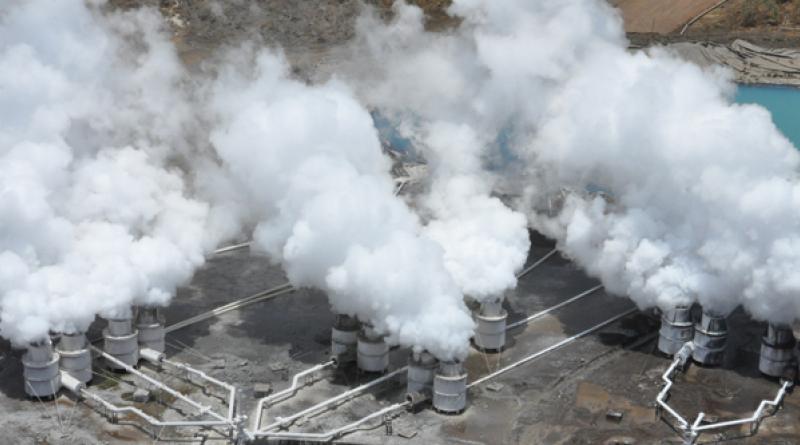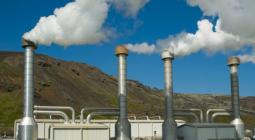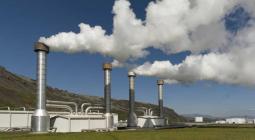African Experts Trained On Geothermal Exploration.

The Geothermal Development Cooperation (GDC) has trained 20 geologists from four African countries on collection of geosciences data and information in a move aimed at unlocking the continent’s unexploited green energy and natural resources valued at billions of shillings.
The event dubbed The Geothermal Leapfrog Software training that was held at the Geothermal Centre of Excellence in Naivasha attracted participants from Djibouti, Ethiopia, Kenya and Tanzania.
GDC Chief Executive Johnson Ole Nchoe said the training focused on strengthening the mechanism for gathering, disseminating and archiving critical geological data required by investors and policy makers.
Access to Geoscience data, he stated is essential for scientific investigation, managing geological hazards, land use evaluation and classification, civil engineering projects, formulating government resource policy and efficient exploitation of natural resources
Within the framework of Energy, Climate Change and Sustainable Development Goal, the governments of most African countries are keen and committed to explore and further develop geothermal energy as one of the alternative renewable energy resources in their respective countries.
This is despite the fact that among various challenges to achieve this strategic energy development objective in a sustainable manner is the inadequate skilled manpower in the areas of geothermal science and technology
“With credible geological and geoscientific data, it is much easier to establish the amount of natural resources under Kenya’s and Africa’s feet. This effectively reduces exploration risks and increase discovery rates of natural resources
Drilling of geothermal wells is a very expensive activity. In addition, it is a very risky business because there are chances of either striking steam or striking nothing,” said Ole Nchoe
According to geological experts most of the available geological/ geosciences data in Africa are outdated. This affects the credibility of the resource information, and has impacted on the bankability of exploration projects.
The Geothermal Leapfrog Software training was carried out under the auspices of the Interim Project Coordination Unit -Africa Geothermal Centre of Excellence (IPCU -AGCE). It was sponsored by the United Nations Environment Programme (UNEP) in partnership with the New Zealand Geothermal Company.
“The objective of such training is to enhance the capacity of geothermal experts in collecting, integrating, processing and interpreting geoscientific data, as well as develop a three dimensional conceptual model using the software that guides well targets and reservoir depth.
Geothermal projects typically have sparse data to work with, so you need tools that help you make the most of what you have. The availability of real time information and data can shorten the feedback loop between results monitoring, policy formulation and investment. It also accelerates the speed and scale at which development actors can implement change” said the CEO.
Data types that the training addressed included geology, geophysics, hydrothermal alteration and temperature data. It also took into account multidisciplinary data streams for well planning and field management.
One of the trainers from GDC Leonard Wamalwa noted that access to high-quality geoscientific products and data reduces the risk of companies venturing to discover new prospects and deposits.
“Geoscience data is also an important resource for assessment, monitoring and design of response strategies for many natural hazards including volcanoes, earthquakes and landslides among other phenomena.
Improved information insights also inform investors, as well as regulators and the general public who are increasingly demanding sustainable energy solutions.
Technology and innovation that reduces the associated costs of geothermal exploration and the development of new fields gives companies the edge and pushes the industry forward.” explained Wamalwa
Kenya has heavily invested in geothermal energy as it targets 100 per cent transition to green energy by 2020 to address the climate change challenge.
Speaking at the first Global Conference on Sustainable Blue Economy from Kenya, Canada and Japan co-hosted in Nairobi, President Uhuru Kenyatta said renewable energy makes up 70 per cent of Kenya’s installed electric power capacity, with investment scaled up.
According to the Renewables Global Status 2018, Kenya tops in Africa with 700 megawatts (MW) of geothermal power.
The US has the largest geothermal generating capacity with 2,500 megawatts followed by the Philippines (1,900 MW), Indonesia (1,800 MW), Turkey (1,100 MW), New Zealand (1000 MW), Mexico (900 MW), Italy (800 MW) and Iceland (750 MW).
Kenya beats technological heavyweight Japan which has been ranked tenth with an output of 500 MW.
The rest of the world shares 950 MW. Ethiopia is the only other African country with developed geothermal energy (7 MW).
Geothermal is widely considered a preferable, low-cost renewable energy source due to low emissions when compared to thermal sources.
It is also cheaper than thermal power when used as an alternative to mitigate depressed hydropower generation due to drought. Kenya has a target of 5 gigawatts (GW) geothermal capacity by the year 2030.
Green energy power plants under development in Kenya include the 300 MW Lake Turkana Wind Power Plant, which is the single largest wind power plant in Africa, the 70 MW Olkaria 1 and the 140 MW Ol Karia V.
Kenyans are inching closer to getting a relief of lower power bills when three Independent Power Producers (IPPS) cleared by the Geothermal Development Company (GDC) start operations at the Menengai Crater Floor in Nakuru.
The three producers are expected to set up power plants under a build–own–operate model, giving hope for cheap electrical power in the country. Each is expected to set up a 35MW modular geothermal power plant in the Menengai Crater field to generate a cumulative of 105 MW.
Ole Nchoe said once complete, the Menengai GDC plant will produce enough electricity to serve almost half a million homesteads and 300,000 businesses.
“We have undertaken 95 percent of works on a 25km long pipeline which is expected to carry 150MW of steam to be used by the power plants in producing electricity”, Engineer Ole Nchoe said.
Quantam Power East Africa was the first of the three IPPs that were chosen to take part in the project to receive a letter of support from the Government for the construction of the 35MW power plant. The IPP has started developing its plant at a cost of Sh8.2 billion. The African Development Bank will provide Sh4.03 billion ($40m) to Quantam.
Two other IPPs – OrPower22 and Sosian Menengai – are strategizing to attain financial closure with financiers.
7 July 2019
KENYA NEWS AGENCY




